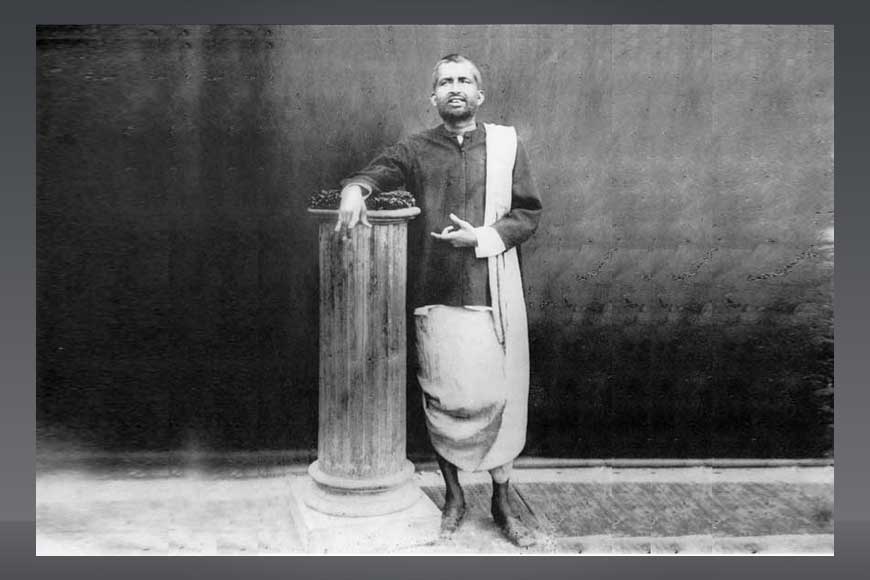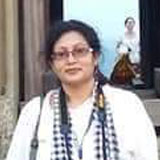Ramakrishna Paramhansa – Man beyond Religion

Anita Bose is a well-known researcher and academician of South-East Asia and an ardent follower of Ramakrishna Paramhansa. She has delivered lectures at various Ramakrishna Mission events including Ramakrishna Mission, Golpark
‘Rain-water never stands on high ground, but runs down to the lowest level. So also does mercy of God, that remains in the hearts of the lowly, but drains off from those of the vain and the proud.’ —Ramakrishna Paramahansa.
In the current climate of fear of terror --- religion and racism are hot topics globally. In fact, religious intolerance is a bigger cause of prejudice than race nowadays. In Indian society, race, caste, and religion still remain the prime ordering principles. Yet religious violence isn't the only plague in India. Although caste-based discrimination is unconstitutional, caste-based violence still persists. At a time when the very foundation of religion, faith in God is crumbling under the relentless blows of materialism and skepticism, Sri Ramakrishna Paramahansa is a beacon of hope for human salvation on earth.
He was not a religious preacher, nor did he represent any particular religion. He was a man beyond religion and a philosopher, whose teachings have become not just tenets of Hinduism, but life advice. His words like ‘Many good sayings are to be found in holy books, but merely reading them will not make one religious’ -- resonates with the spiritual soul. Today, as I write about this great soul, I realize how through his own God-intoxicated life, Sri Ramakrishna proved that God’s revelation takes place at all times and that God-realization is not the monopoly of any particular age, country, or people. He held the lamp of knowledge for us and encouraged us to join the spiritual path to salvation.
Ramakrishna believed in the purity of the soul and considered everyone, both men and women from all casts and creeds and religions, as holy. He did not form any cult or claim to follow a specific path to salvation. He projected himself as a common man who viewed Kali as an ordinary mother, truant, playful and benign.
He was the very core of the spiritual realizations of the seers and sages of ancient India. His whole life was literally an uninterrupted contemplation of God. He reached a depth of God-consciousness that transcends all time and place and has a universal appeal. He often said, ‘Many are the names of God, and infinite the forms that lead us to know Him. In whatsoever name or form you desire to call Him, in that very form and name you will see Him.’
Nineteenth century Bengal was a period of considerable turmoil, both cultural and intellectual. Now, living in the 21st century when the world has turned into a fragmented global village, it seems incredible to think that a young man from an obscure village who joined as priest of Dakshineshwar Kali Temple could revolutionize the world with his simple words of faith. The greatest contribution of Sri Ramakrishna to the modern world is his message of the harmony of religions. Sri Ramakrishna insisted that all religions are the revelation of God in His diverse aspects to satisfy the manifold demands of human minds.
Different religions give us the pictures of one truth from different standpoints. They are not contradictory but complementary. Sri Ramakrishna faithfully practiced the spiritual disciplines of different religions and realized that all of them lead to the same goal. So, he declared, ‘Jato mot, tato path’ (As many faiths, so many paths). The paths vary, but the goal remains the same. Harmony of religions is not uniformity; it is unity in diversity. It is not a fusion of religions, but a fellowship of religions based on their common goal — communion with God. This harmony is to be realized by deepening our individual God-consciousness.
Sri Ramakrishna faithfully practiced the spiritual disciplines of different religions and realized that all of them lead to the same goal. So, he declared, ‘Jato mot, tato path’ (As many faiths, so many paths).
This one statement has the potential of reconciling all differences, ensuring world peace and universal brotherhood in social and spiritual realm. But this one also holds immense potential in material life. The key here is respecting every opinion and thought without evaluating them at their face value and judging them by their merits without any prejudice. In this way apparently irreconcilable problems become reconcilable, and differences cease to exist.
Like the lighthouse that mark dangerous coastlines, hazardous shoals, reefs, rocks, and safe entries to harbors; brought ships lost in turbulent waters to anchor in safe harbours serve as a beacon for navigational aid, for maritime pilots, Ramakrishna remains the spiritual lighthouse who helps lost souls find their link to their Creator. Everyone who came to him felt uplifted by his profound God-consciousness, boundless love, and universal outlook. Each seeker saw in him the highest manifestation of his own ideal.
Also read : Rammohan Roy, a feminist ahead of his time
Ramakrishna believed in the purity of the soul and considered everyone, both men and women from all casts and creeds and religions, as holy. He did not form any cult or claim to follow a specific path to salvation. He projected himself as a common man who viewed Kali as an ordinary mother, truant, playful and benign. For him, the path to salvation was through fulfilling one’s duties. Paramahansa would ask his disciples to be kind and respectful to fellow human beings and all creatures because God resides in all His creations. Ramakrishna even proclaimed his wife Saradamoni as the embodiment of the Divine Mother and performed the Shodashi Puja with her in the seat of Goddess Kali -- and that’s how revolutionary he was.
Sri Ramakrishna was a man beyond religion and a philosopher, whose teachings have become not just tenets of Hinduism, but life advice. His words like ‘Many good sayings are to be found in holy books, but merely reading them will not make one religious’ -- resonates with the spiritual soul.
He would say only when God-consciousness falls short, traditions become dogmatic and oppressive and religious teachings lose their transforming power. In these turbulent times, when everything seems to be hanging in a state of limbo, people desperately seek Divine grace and they all feel irresistibly drawn to Sri Ramakrishna’s life and teachings. He is a silent but very powerful force who influences the spiritual thought of our time. His message of harmony gives us hope and shows the way.
Sri Ramakrishna Punyatithi is the death anniversary of Sri Ramakrishna Paramahansa. As per Gregorian calendar, Sri Ramakrishna died on August 16, 1886. The corresponding date in Hindu Lunar Calendar is the Shukla Paksha Dasami, or the 10th day of the waxing phase of moon, in Bhadrapad month. This date in 2021 is on September 16. In 2021, it is the 135th death anniversary of Sri Ramakrishna Paramahansa. He continues to live among us and through his life and teachings, continues to inspire us.











